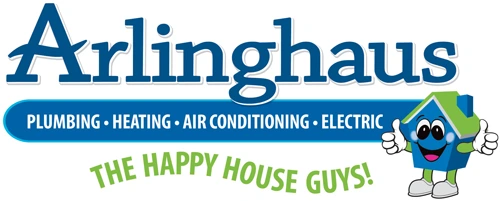Do you know your home’s value? This is a question no one may be able to answer off-hand. In fact, there are several ways to classify your property value. As a result, the value of your home is almost constantly changing. Misconceptions on how home value works make it harder for you to decide how to improve your home, and what you would ask for when you sell it. Get the facts, and you will not be unpleasantly surprised when you get an estimate. Use this information to make your home investments increase property value more efficiently.
Misconception #1: Assessed Home Value = Market Value
When you are trying to find out what your home is worth, you must use a number of possible assessments to get this number. The first is intangible, as it relates to the convenience and happiness your home affords prospective buyers. It is impossible to quantify, but thankfully the other methods are not. These calculations are:
- Market value: what your home is worth based on your area and the current market
- Asking price: the price you set on your home when you go to sell it
- Appraisal estimate: the value of your home based on objective standards
- Assessed value: your home’s value according to tax assessors
The assessed value is almost always a percentage of the appraisal, and neither the assessed or appraised value is the same as the market value. Both could be considerably lower than the market value. Remembering the differences between these estimates helps you maintain a better understanding of the actual value of your home, and how it can change over time.
Misconception #2: Maintenance costs are recouped in the home’s sale price
Alas, no one is going to reward homeowners for taking basic care of their homes. You should plan to set aside about 2 percent of your home’s value each year toward maintenance and upkeep. This does not typically apply to serious upgrades, such as remodeling your kitchen or bathroom, or finishing your basement. However, if your air conditioner or furnace is dead or dying, you have to replace it. This is also true for your roof, appliances, flooring, fixtures and more.
People often wonder why maintenance does not affect property value. The truth is that it does, but perhaps not in the way you might think. There are three basic reasons to preserve your investment in your home: increase property value, improve your contentment with the home and avoid negative consequences. Maintenance almost exclusively relates to the latter of the three. You maintain your home so that when you go to sell the property, it is a well-kept structure people want to buy. This somewhat intangible concept has a real effect on your home’s potential market value. Homebuyers generally prefer a home that is move-in ready, not a place they have to gut and repair before they can start unpacking their bags. The housing market tends to punish people who do not perform regular upkeep, and you should work to avoid falling on the wrong side of this equation.
Misconception #3: Home improvements increase property value by an equal proportion
When you make changes to your home, they qualify as maintenance, updates or improvements. Maintenance includes cleaning and service for the structure and systems of the home, as well as a number of repairs. Updates replace old equipment without necessarily reconceiving that part of the home. Improvements and updates are similar, but improvements usually make a significant change that impacts the functionality and livability of your home. For example, if you replace your air conditioner with a new one, you could call that an update. However, replacing your HVAC system with geothermal heating would be considered an improvement.
Assessing the property value increase of certain improvements can be somewhat fickle. There are ways to estimate what kind of boost will you see, such as Remodeling Magazine’s Cost vs Value Report. However, the cost of the improvement is almost never the deciding factor in the increase in value. Spending $20,000 on your kitchen upgrade does not mean you can reasonably ask for $20,000 more when you sell. In truth, it rarely does.
Some improvements are more valuable than others, and there are at least a few that may not net you any benefit at all. As such, you should target your home improvements toward the things that are most needed for your home and will give you the biggest bang for your buck. For example, replacing your front door will almost certainly get you a small bonus over the expense, where changing your entire home’s flooring from hardwood to tile might not make a difference at all.
Misconception #4: Bigger house = Bigger selling price
When you look at homes for sale, you often see a rate of dollars per square foot. Depending on the area, homes might sell for less than $100 per square foot or for much, much more. However, there are so many factors that go into this determination that square footage is only one small part of the equation. This is particularly true for gentrifying neighborhoods where a lot of the older homes on the street are replaced with units that are new and more efficient.
People living in larger homes for the neighborhood cannot rely on the assumption that their homes have a higher property value based simply on square footage. It also depends on the style of the home, the overall quality of upkeep, landscaping features, location, age and more. An older, larger home that is not in the best condition may well be appraised less than a smaller nearby home with fresh upgrades. In fact, simply listing the price higher may cost you, in some areas. If the market is not strong at a particular point, listing the price much higher than your smaller comps may make buyers less interested in trying to negotiate with you. Paradoxically, having expectations that are too great could actually decrease the ultimate sales price.
Misconception #5: Property value always goes up
If you closely watch the real estate market for a few months, you will quickly realize it is shockingly variable. Pick a large neighborhood with several homes for sale and see what happens over the course of a year. One home might sell immediately while its neighbor with a similarly appraised value sells six months later for $20,000 less (or more). Market changes throughout the year can affect home prices just as inflation does.
Just as the market can, and usually does, create a slow increase in property value, there are plenty of factors that could make your property drop in value. Consider these possible fluctuations of any local real estate market:
- Environmental disasters that displace thousands of people
- Massive layoffs at a large, local employer
- Natural downturns in buyer interest in fall and winter
- Civic developments that make a neighborhood more difficult to access
Only one of these is regular throughout the year, but the point is that your property is not immune from decreases in value that have little to do with your or your approach to homeownership. These considerations do not include things like mold, curb appeal and structure maintenance, which are within your control and could boost or tank your property value.
Get the Facts to Improve the Return on Your Investments
Your home’s value changes based on the month of the year and the way you take care of it. Knowing the different assessments used to determine property value helps you to cut through the confusion and form a stronger opinion of your property investment. As a homeowner, the alterations you make to your home affect its value in ways that are not always consistent. Understanding this concept arms you with the tools you need to improve the return on your overall investment.


